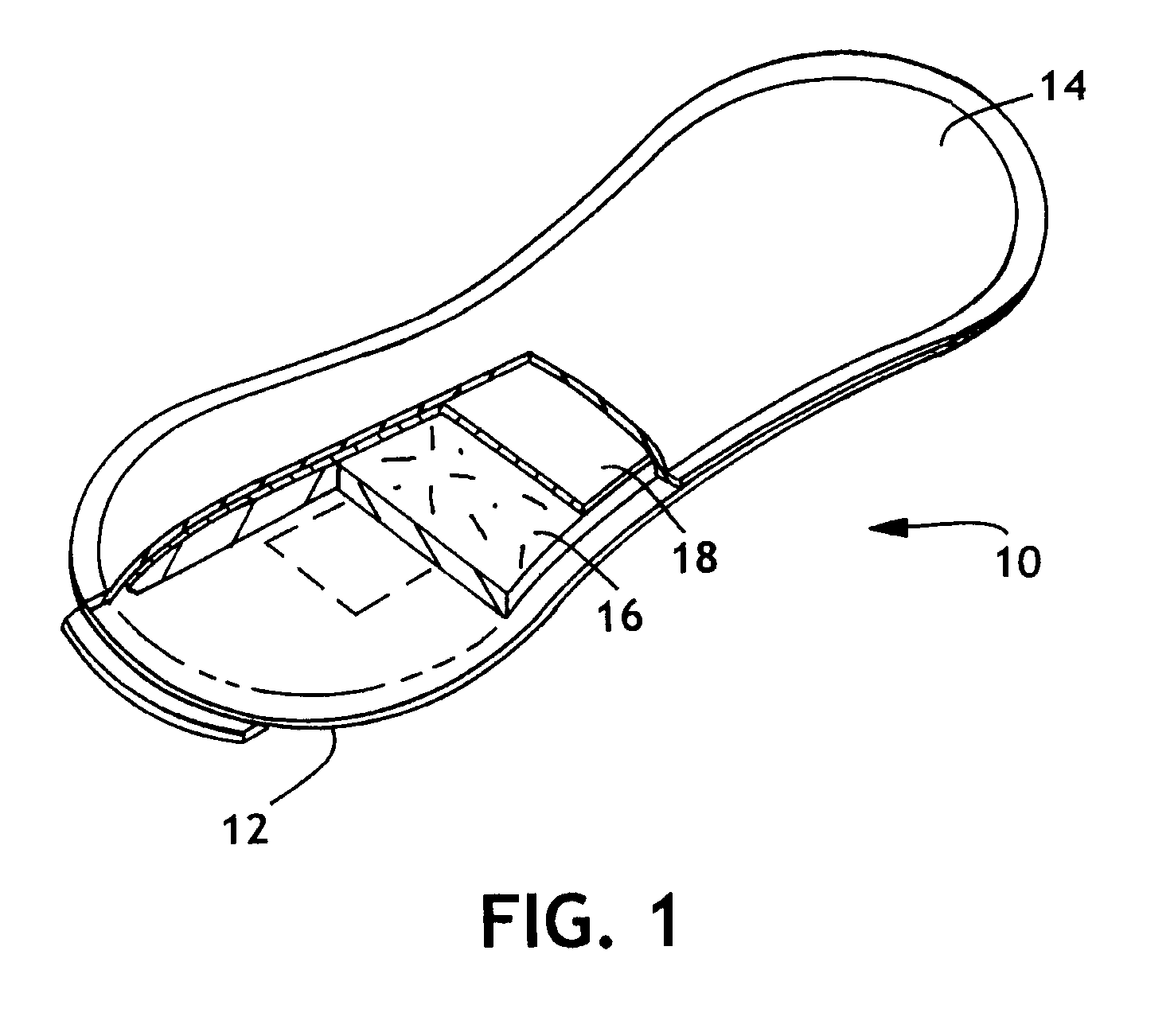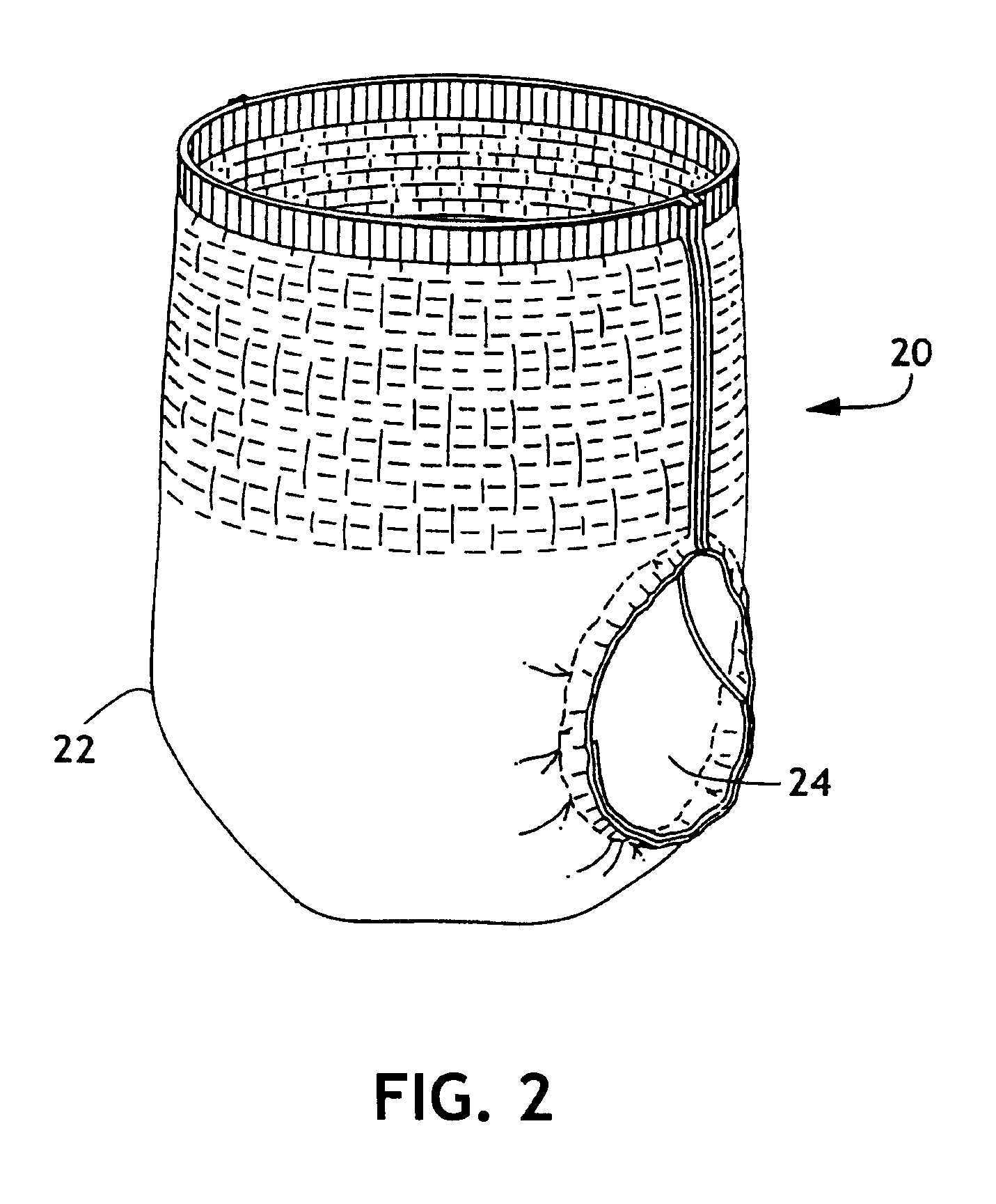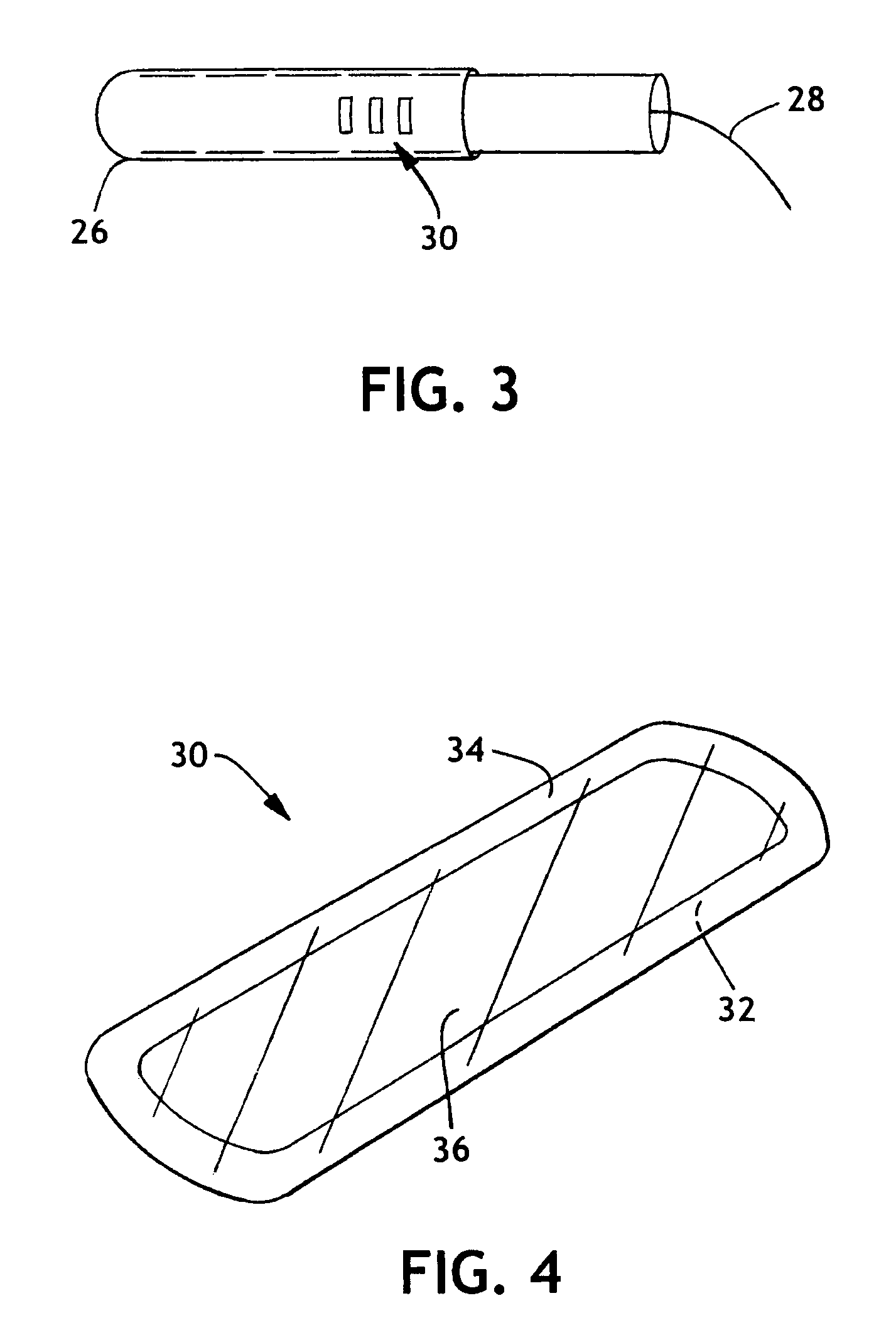Personal care products with visual indicator of vaginitis
a vaginal fluid and personal care technology, applied in the direction of instruments, contraceptives, bandages, etc., can solve the problems of putting both mother and baby at higher risk, odor in vaginal fluid, and conventional techniques for confirming the presence of “clue cells” are often complicated and slow, and achieve the effect of diagnosing vaginal fluid
- Summary
- Abstract
- Description
- Claims
- Application Information
AI Technical Summary
Benefits of technology
Problems solved by technology
Method used
Image
Examples
example 1
[0060]A visual indicator was incorporated into a Kotex Lightdays Ultra coverage (purse-paks, unscented) feminine hygiene pad as a small strip of tissue and demonstrated to be sensitive to the amine-based vaginal odors. ANB dye at a concentration of 50-5000 micrograms was coated onto a cellulose towel substrate and allowed to air dry, producing an orange color. Small strips (1 cm×2 cm) of the towel were then inserted into the pad at one end under the body side liner. The orange colored strip was still quite visible. The pad was then insulted with 10 microliters of a 10 mg / ml TMA amine solution at a concentration of 100 micrograms placed in the target area of the pad, and then the pad was placed into a 1 quart, glass jar and sealed. The liquid amine did not directly touch the dye. The orange color of the cellulose strip rapidly changed color to a grey / black color, indicating the presence of amines and therefore serving as an alert signal for potential vaginitis.
[0061]This experiment d...
example 2
[0062]A visual indicator was incorporated into a Kotex Lightdays Long (unscented) feminine hygiene pad as a small strip of nitrocellulosic material and demonstrated to be sensitive to the amine-based vaginal fluid. ANB dye at a concentration of 50-5000 micrograms was placed on the strip on one end in three relatively circular dots with a diameter of about 7 mm and allowed to air dry, producing an orange color. A strip (1.3 cm×8 cm) of the material was then inserted into the pad as shown in FIG. 5 with the three dots on the end just above the baffle. The dots on the strip were visible through the baffle but the strip was not visible through the body side liner. The pad was then insulted with 200 microliters of a 1.5 mg / ml mixed amine (TMA, 1,5-DAP, 1,4-DAB, and Tyramine) solution-placed in the target area of the pad. The orange color of the dye deposits changed color to a grey / black color after approximately <5 minutes, indicating the presence of amines and therefore serving as an al...
example 3
[0064]A visual indicator was incorporated into a Kotex Lightdays. Long (unscented) feminine hygiene pad as a small strip of nitrocellulosic material and demonstrated to be sensitive to the amine-based vaginal fluid. ANB dye at a concentration of 50-5000 micrograms was placed on the strip on both ends in three relatively circular dots with a diameter of about 7 mm and allowed to air dry, producing an orange color. A strip (1.3 cm×8 cm) of the material was then inserted into the pad as shown in FIG. 5 with the three dots on each end just above the baffle. The dots on the strip were visible through the baffle but the strip was not visible through the body side liner. The pad was then insulted with 200 microliters of a 1.5 mg / ml mixed amine (TMA, 1,5-DAP, 1,4-DAB) solution placed in the target area of the pad. The orange color of the dye deposits changed color to a grey / black color after approximately <5 minutes, indicating the presence of amines and therefore serving as an alert signal...
PUM
 Login to View More
Login to View More Abstract
Description
Claims
Application Information
 Login to View More
Login to View More - R&D
- Intellectual Property
- Life Sciences
- Materials
- Tech Scout
- Unparalleled Data Quality
- Higher Quality Content
- 60% Fewer Hallucinations
Browse by: Latest US Patents, China's latest patents, Technical Efficacy Thesaurus, Application Domain, Technology Topic, Popular Technical Reports.
© 2025 PatSnap. All rights reserved.Legal|Privacy policy|Modern Slavery Act Transparency Statement|Sitemap|About US| Contact US: help@patsnap.com



